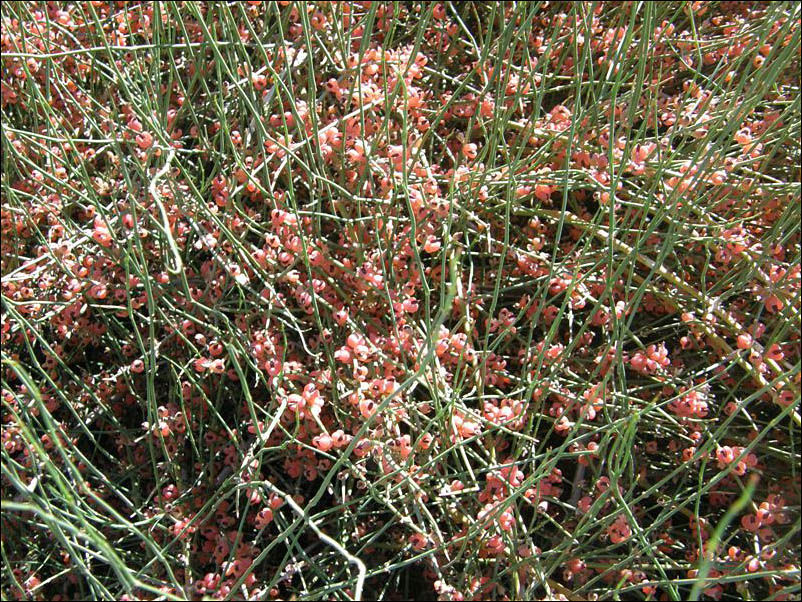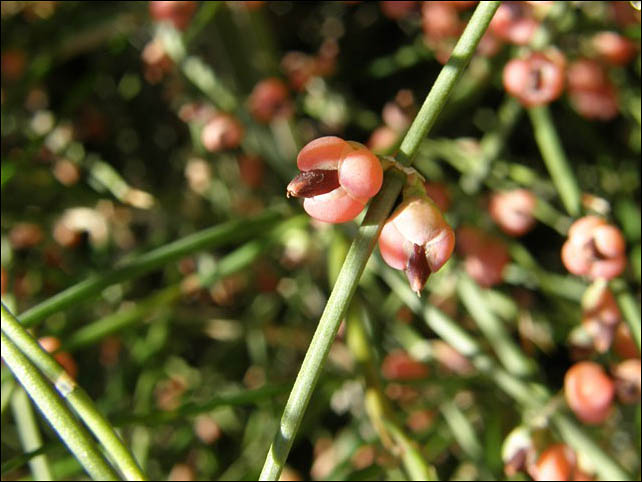Clapweed (Ephedra antisyphilitica)
Overview, Clapweed (Ephedra antisyphilitica), Chihuahuan Desert Gardens. Photograph by
Wynn Anderson.
Flowers, Clapweed (Ephedra antisyphilitica), Chihuahuan Desert Gardens. Photograph by
Wynn Anderson.
- Common English Names: Clapweed
- Common Spanish Names: Popote, Canatilla
- Scientific Name: Ephedra antisyphilitica Berl. ex C.A. May (ee-FED-druh
ant-ee-sih-fill-LIH-tih-kuh).
- Family: Ephedraceae (Joint-fir Family)
- Geographic Range: Southeastern Trans-Pecos to central and south Texas,
northeastern Mexico to Nuevo León and San Luis Potosí; also southwestern Oklahoma and northeastern
New Mexico.
- Plant Form: Shrub to 3' tall.
- Ethnobotany Widely used as a dubiously effective folk remedy for syphilis in
Mexico and by early Southwestern settlers. Brewed as a tea for renal disorders as well as venereal
diseases. Contains minor amounts of ephedrine.
- Remarks: Sub-erect to sprawling mass of intricately jointed, dull green,
stems, seemingly naked but generally with two tiny, scale-like leaves at the nodes and a thin
orange/tan to brown ring encircling the stem below the leaves. Dioecious producer of flowering and
fruiting cones with the female cones distinctively reddish in color and succulent. Found on
deserted scrub flats and gravelly hills, often on gypseous soils.

Last Update: 18 Aug 2013



